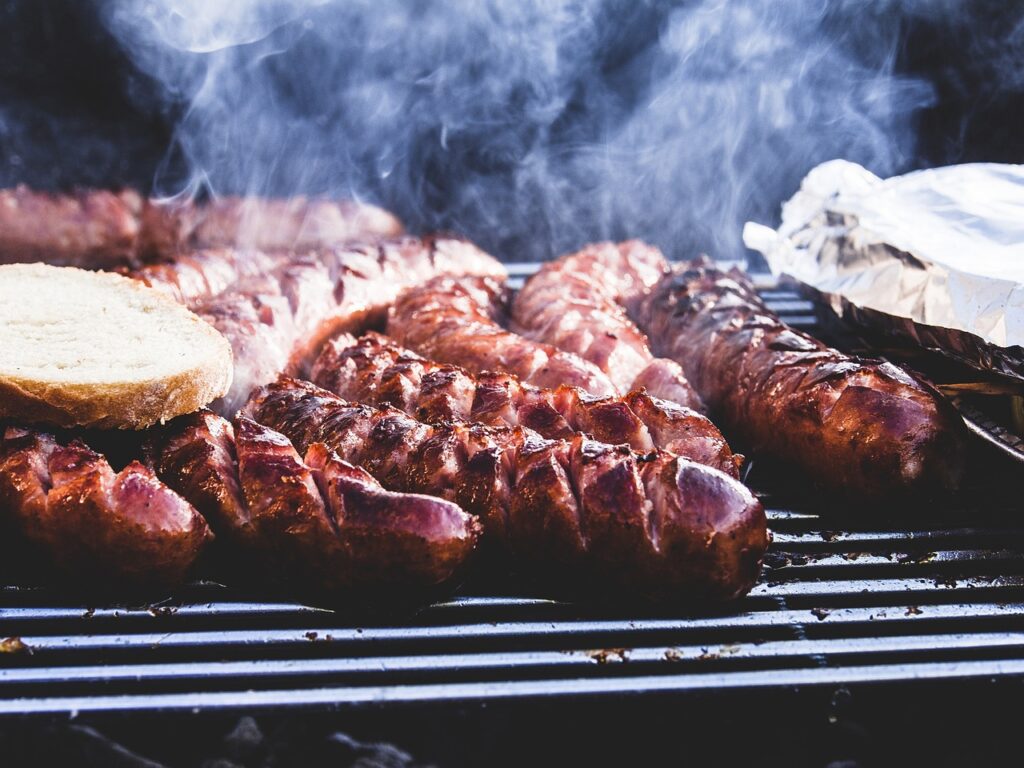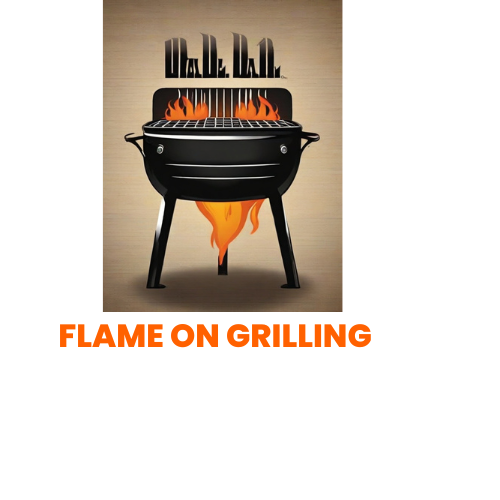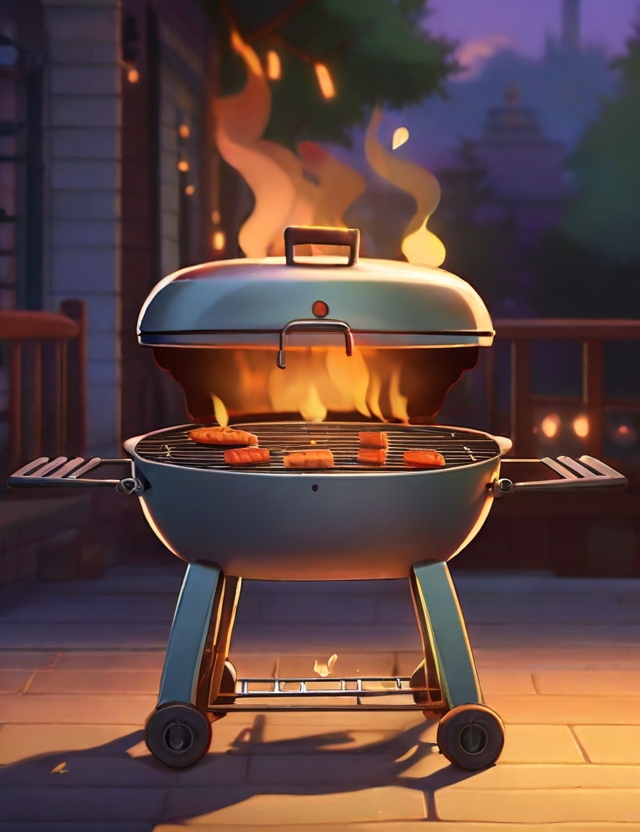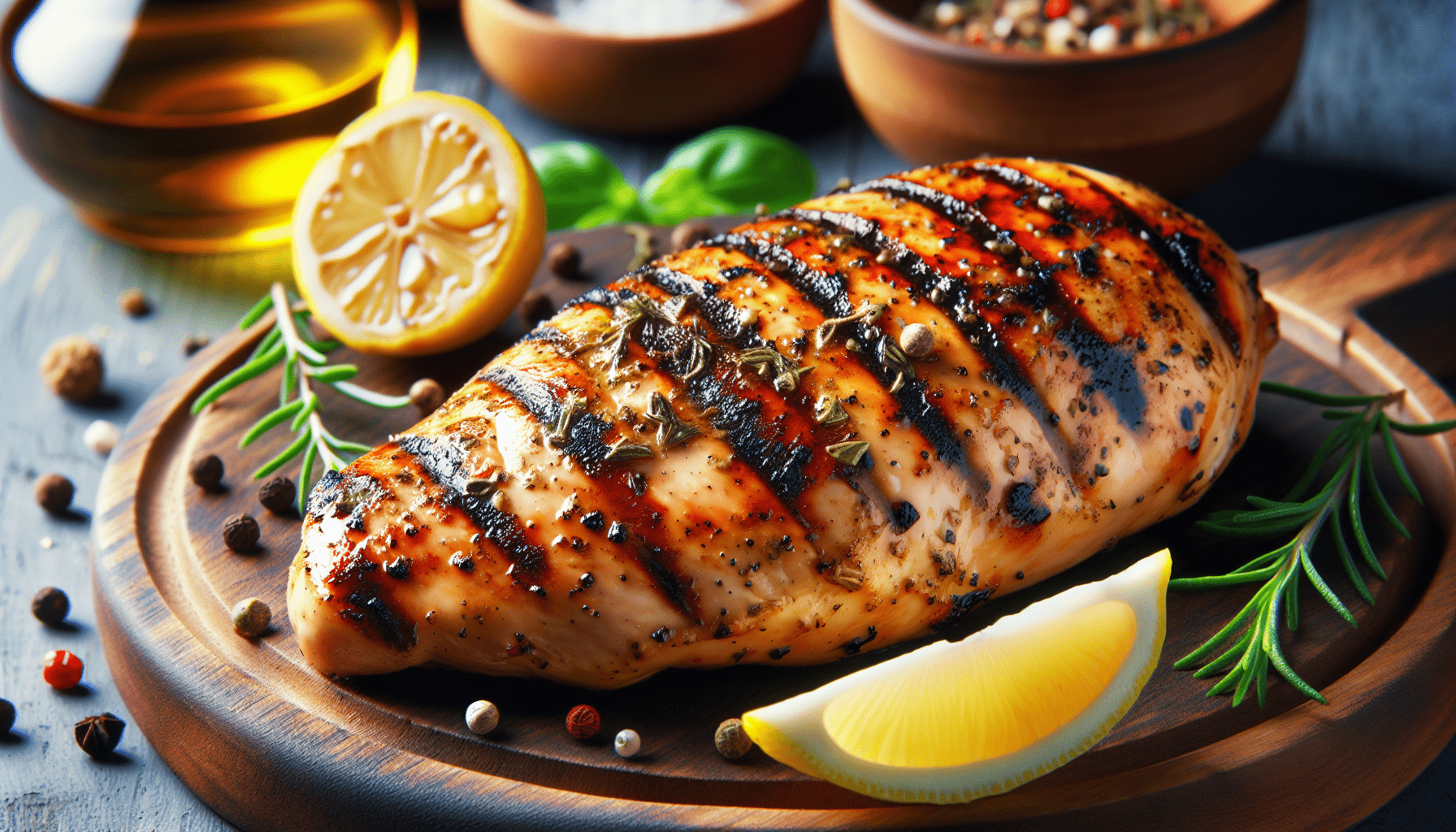In the world of backyard cooking, grilling is a skill that can elevate your culinary prowess to new heights. Whether you’re a seasoned pro or a novice just starting to venture into the world of barbecue, “The Ultimate Guide to Grilling: Mastering the Art of BBQ” is here to be your trusted companion. This comprehensive guide provides essential tips, techniques, and mouth-watering recipes that will turn you into a grilling virtuoso. From perfectly seared steaks to juicy burgers and smoky ribs, get ready to ignite your taste buds and become the master of the grill. Get ready to embrace the sizzling sights and tantalizing aromas of barbecuing like never before.
Choosing the Right Grill
Whether you’re a grilling enthusiast or just starting out, choosing the right grill is an essential step in mastering the art of BBQ. With so many options available, it can be overwhelming to know which grill is best suited for your needs. In this guide, we will explore different types of grills, including gas, charcoal, electric, and pellet grills, to help you make an informed decision.

Gas Grills
Gas grills are a popular choice among grillers due to their convenience and ease of use. They are fueled by propane or natural gas, offering instant heat with just the push of a button. Gas grills are ideal for those who value efficiency and want to quickly cook their food without the hassle of charcoal or pellets. Additionally, they provide precise temperature control, allowing you to easily adjust the heat levels according to your grilling needs.
Charcoal Grills
For those seeking a more traditional grilling experience, charcoal grills are hard to beat. These grills use charcoal briquettes or lump charcoal as fuel, providing a smoky flavor that is unmatched by other types of grills. Charcoal grills require a bit more patience and skill, as they take longer to heat up and require more effort to maintain the desired temperature. However, the taste and aroma of food cooked on a charcoal grill make it worth the extra effort for many grilling enthusiasts.
Electric Grills
Electric grills offer a convenient grilling option, especially for those living in apartments or condos where open flames may not be allowed. These grills are powered by electricity, eliminating the need for charcoal or propane. Electric grills heat up quickly and provide consistent temperature control, making them suitable for quick and easy grilling sessions. While they may not provide the same smoky flavor as charcoal grills, electric grills are a great choice for those looking for a hassle-free grilling experience.
Pellet Grills
Pellet grills combine the convenience of gas grills with the smoky flavor of charcoal grills. These grills use wood pellets as fuel, which are added to a hopper and automatically fed into a fire pot. Pellet grills offer precise temperature control and allow you to infuse your food with a variety of smoky flavors by using different types of wood pellets. They are versatile, suitable for both grilling and smoking, and are often favored by BBQ enthusiasts who appreciate the taste and convenience they provide.
Essential Grilling Tools
To become a master griller, it’s important to have the right tools at your disposal. Here are some essential grilling tools that will make your grilling experience easier and more enjoyable.
Grill Brush
A grill brush is a must-have tool for maintaining a clean grill surface. Use it to remove any leftover food debris and grease from the grates before and after each grilling session. Look for a grill brush with sturdy bristles and a long handle for easy maneuverability.
Tongs
Tongs are versatile grilling tools that allow you to flip and turn your food without piercing it, thereby preserving the juices and flavors. Look for tongs with a comfortable grip and a locking mechanism for easy storage.
Spatula
A spatula is essential for flipping delicate foods such as burgers, fish, and vegetables. Look for a spatula with a thin edge and a long handle for easy handling and flipping.
Grilling Gloves
Grilling gloves are essential for protecting your hands from the heat of the grill. Look for gloves made from heat-resistant materials such as silicone or leather, with a good grip to ensure safe handling of hot food.
Preparing the Grill
Before you start grilling, it’s important to properly prepare your grill to ensure optimal performance and safety. Here are three key steps in preparing your grill.
Cleaning the Grill
Start by cleaning your grill grates thoroughly. Use a grill brush to remove any leftover food particles and grease. For stubborn debris, you can soak the grates in warm soapy water or use a grill cleaner. Once cleaned, rinse the grates thoroughly and dry them before using the grill.
Seasoning the Grill
Seasoning your grill prevents food from sticking to the grates and helps to develop a non-stick surface over time. To season your grill, lightly oil the grates with a high smoke point oil such as canola or vegetable oil. Heat the grill on medium-high for about 15 minutes, or until the oil begins to smoke. Allow the grill to cool and wipe off any excess oil with a clean cloth.
Setting up the Fire
Depending on the type of grill you’re using, setting up the fire will vary. For charcoal grills, arrange the charcoal in a pyramid shape and add lighter fluid or use a chimney starter to ignite the charcoal. Allow the coals to burn until they are covered in white ash before starting to cook. For gas grills, ensure the propane tank is connected securely and turn the gas knobs to the desired heat level. Preheat the grill for 10-15 minutes before placing the food on the grates.
The Perfect Charcoal Fire
Cooking with charcoal can bring out wonderful flavors in your food, but getting the charcoal fire just right is crucial. Here are some tips for achieving the perfect charcoal fire every time.
Choosing the Right Charcoal
When selecting charcoal for your grill, you have two options: charcoal briquettes or lump charcoal. Charcoal briquettes burn longer and more consistently, making them ideal for longer cooking sessions. Lump charcoal, on the other hand, provides a more natural flavor but tends to burn faster. Consider your grilling needs and personal preference when choosing the right charcoal for your grill.
Lighting the Charcoal
There are different methods for lighting charcoal, but the chimney starter method is widely recommended. Fill the chimney starter with charcoal and place crumpled newspaper or fire starter cubes underneath. Light the paper or starter cubes and let the charcoal burn for about 15-20 minutes. Once the charcoal is covered in white ash, carefully pour it onto the grill grate.
Understanding Heat Zones
Charcoal grills offer versatile heat zones, which are important for controlling the temperature and achieving different cooking techniques. Create a high-heat zone by placing more charcoal in one area of the grill and a low-heat zone with fewer coals or no coals. This allows you to sear food over high heat and then move it to a lower heat zone to finish cooking indirectly.
Proper Gas Grill Setup
Gas grills offer convenience and quick heating, but it’s essential to set them up properly for safe and efficient grilling. Here are three key steps in setting up your gas grill.

Checking the Propane Tank
Before starting your gas grill, check the propane tank to ensure it is properly connected and not empty. You can do this by inspecting the gas hose for any signs of leaks and turning on the gas to listen for a hissing noise. If you suspect a leak, turn off the gas immediately and have it inspected by a professional.
Preheating the Grill
Preheating your gas grill is essential to ensure even cooking and to burn off any leftover food particles. Close the lid of the grill and turn on the burners to the highest heat setting. Allow the grill to preheat for about 10-15 minutes until it reaches the desired temperature.
Using a Drip Pan
To catch drippings and prevent flare-ups, place a drip pan under the grill grates. This will also help to keep your grill clean and prevent grease from accumulating. Fill the drip pan with some water to prevent the drippings from burning and producing unwanted smoke.
Marinades and Rubs
Marinades and rubs are wonderful ways to add flavor and moisture to your grilled dishes. Here’s what you need to know about marinades and rubs.
The Basics of Marinades
Marinades are liquid mixtures that are used to soak meat, poultry, or vegetables before grilling. They typically contain acidic ingredients such as lemon juice, vinegar, or yogurt, which help to tenderize the proteins and infuse them with flavor. Marinades should be prepared in advance and food should be allowed to marinate for at least 30 minutes or up to overnight in the refrigerator for maximum flavor.
Creating Flavorful Dry Rubs
Dry rubs are mixtures of spices, herbs, salt, and sugar that are applied to the surface of the food before grilling. They create a flavorful crust and enhance the natural flavors of the meat or vegetables. Dry rubs can be customized according to your preference, and you can experiment with different combinations of spices to create unique flavors.
Applying Marinades and Rubs
When applying marinades or rubs, ensure that the food is evenly coated to ensure a consistent flavor profile. For marinades, remove the food from the marinade and allow any excess to drip off before placing it on the grill. For rubs, apply a generous amount of the mixture and massage it into the food, ensuring that it adheres well. Let the food sit for a few minutes before grilling to allow the flavors to penetrate.
Mastering Grilling Techniques
Grilling is not just about cooking food; it’s an art that involves various techniques to achieve the perfect results. Here are some essential grilling techniques every griller should master.
Direct Grilling
Direct grilling involves cooking food directly over the heat source, with the grill lid open. This technique is ideal for small, tender cuts of meat that cook quickly, such as steaks, burgers, and boneless chicken breasts. To direct grill, simply place the food directly over the heat source and cook it for the recommended time, flipping it halfway through.

Indirect Grilling
Indirect grilling is a slower cooking method that involves cooking food next to, rather than directly over, the heat source. This technique is perfect for larger, tougher cuts of meat that require longer cooking times, such as roasts, whole chickens, and ribs. To indirect grill, light only one side of the grill and place the food on the unlit side. Close the lid and allow the heat to circulate around the food for even cooking.
Smoking
Smoking is a grilling technique that involves cooking food with low, indirect heat and the addition of wood smoke. This technique imparts a rich smoky flavor to the food and is ideal for cuts of meat that require slow cooking, such as brisket, pork shoulder, or ribs. To smoke, use a smoker box or wrap wood chips in foil and place them over the heat source. Place the food on the unlit side of the grill and maintain a consistent low temperature for a prolonged period.
Rotisserie Cooking
Rotisserie cooking involves skewering the food on a rod and rotating it slowly over the heat source. This technique is perfect for large cuts of meat, such as whole chickens, roasts, or turkeys, and provides even cooking and browning. Many grills come with rotisserie attachments, or you can purchase a standalone rotisserie kit. Follow the manufacturer’s instructions for proper setup and cooking times.
Grilling Different Meats
Grilling meats requires some specific knowledge and techniques to achieve the desired results. Here are some tips for grilling different types of meats.
Steak
Steaks are a popular choice for grilling, and achieving the perfect steak requires attention to detail. Start by preheating the grill to high heat. Season the steak with salt and pepper or your favorite dry rub. Place the steak on the hot grill and sear it for a few minutes on each side to develop a crust. Then, move it to a cooler part of the grill or reduce the heat to medium and continue cooking until the desired doneness is reached.
Burgers
Burgers are a backyard BBQ staple and can be customized to suit any taste. Start by preheating the grill to medium-high heat. Form the ground meat into patties, ensuring they are evenly shaped and slightly larger than the bun. Season the patties with salt and pepper or your favorite seasonings. Place the burgers on the grill and cook them for about 4-5 minutes per side for medium doneness. Avoid pressing down on the burgers, as this can cause the juices to escape and result in a dry patty.
Chicken
Grilling chicken requires a careful balance of heat and timing to ensure juicy, flavorful meat. Start by preheating the grill to medium-high heat. Season the chicken with salt, pepper, and any other desired seasonings. If using bone-in chicken, start grilling with the skin side down to develop a crispy exterior. Cook the chicken for about 6-8 minutes per side, or until the internal temperature reaches 165°F (74°C). Use a meat thermometer to ensure proper doneness and avoid overcooking.
Fish
Grilling fish can be delicate, but with the right technique, you can achieve perfectly cooked, flaky fillets. Start by preheating the grill to medium heat. Brush the fish with oil to prevent sticking and season it with salt, pepper, and any other desired spices. Place the fish on the grill, skin side down, and cook it for about 3-4 minutes per side, depending on the thickness. Avoid flipping the fish more than once, as this can cause it to fall apart.
Pork
Grilling pork can result in tender, juicy meat with a delicious caramelized exterior. Start by preheating the grill to medium heat. Season the pork with salt, pepper, and any other desired seasonings or marinades. Place the pork on the grill and sear it for a few minutes on each side to develop a crust. Then, move it to a cooler part of the grill or reduce the heat to medium and continue cooking until the internal temperature reaches the recommended level for safety and doneness.
Perfecting Vegetables on the Grill
Grilling vegetables brings out their natural sweetness and adds a smoky flavor that enhances their taste. Here are some tips for perfecting grilled vegetables.
Choosing the Right Vegetables
Not all vegetables are suitable for grilling, so it’s important to choose ones that can withstand the high heat and won’t fall apart on the grill. Some great options include bell peppers, zucchini, eggplant, corn on the cob, mushrooms, and onions. Look for vegetables that are firm and have a sturdy structure.
Preparing Vegetables for Grilling
To prepare vegetables for grilling, start by washing them thoroughly and removing any stems or unwanted parts. Slice them into even-sized pieces to ensure even cooking. For smaller vegetables like cherry tomatoes or mushrooms, you can grill them whole or use skewers to prevent them from falling through the grates.
Grilling Techniques for Vegetables
Grilling vegetables requires different techniques, depending on their texture and size. For sturdy vegetables like bell peppers or onions, you can grill them directly on the grates, flipping them occasionally until they are tender and lightly charred. For more delicate vegetables like zucchini or asparagus, you can brush them with oil, season with salt and pepper, and grill them in a grilling basket or on foil to prevent them from falling apart.
Grilling for Special Diets
Grilling is a versatile cooking method that can accommodate various dietary needs. Here are some tips for grilling for special diets.
Grilling for Vegetarians
Grilling for vegetarians offers a wide range of possibilities. Grilled vegetables, tofu, veggie burgers, and plant-based sausages can be delicious alternatives to meat. Marinating vegetables or tofu before grilling can add flavor and moisture. Grilling fruit such as pineapple or peaches can also provide a sweet and smoky addition to vegetarian dishes.
Gluten-Free Grilling Options
For those following a gluten-free diet, grilling offers many safe and delicious options. Choose gluten-free marinades and rubs, or make your own using gluten-free ingredients. Opt for gluten-free buns or lettuce wraps for burgers, or serve grilled meats and vegetables with gluten-free side dishes such as grilled potatoes, rice, or gluten-free pasta salads.
Low-Carb Grilling Recipes
Grilling can be a great option for those following a low-carb diet. Choose lean cuts of meat, poultry, or seafood and pair them with low-carb vegetables such as zucchini, bell peppers, or cauliflower. Avoid marinades or sauces with added sugars and instead opt for fresh herbs, spices, and healthy fats like olive oil or avocado oil. Grilling vegetables is an excellent way to incorporate fiber and nutrients while keeping your carb intake low.
In conclusion, grilling is an art that can be mastered with the right tools, techniques, and knowledge. Whether you choose a gas, charcoal, electric, or pellet grill, make sure to properly prepare and season it for optimal performance. Marinades and rubs can add depth of flavor to your grilled dishes, and mastering grilling techniques such as direct grilling, indirect grilling, smoking, and rotisserie cooking will greatly enhance your culinary skills. From steaks and burgers to chicken, fish, and vegetables, there are endless possibilities to explore on the grill. With these tips and techniques, you’ll be well on your way to becoming a grilling pro and creating delicious meals for family and friends. So fire up the grill, grab your favorite grilling tools, and get ready to embark on an exciting grilling adventure!




